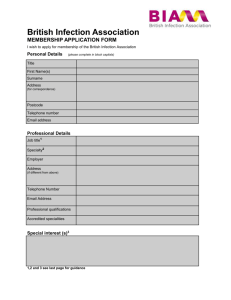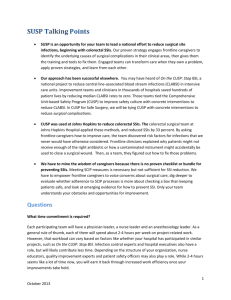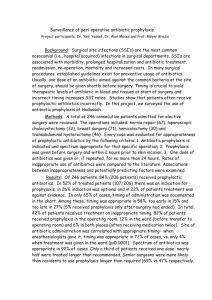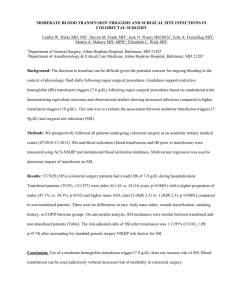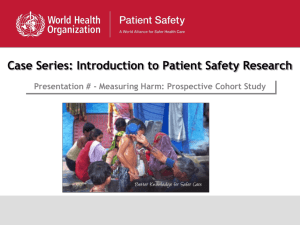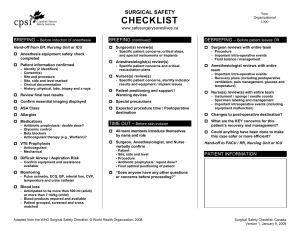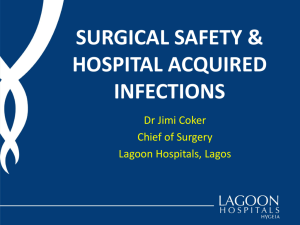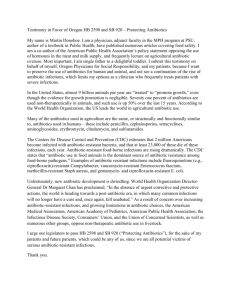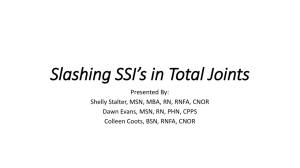Surgical site infections in tertiary care hospital
advertisement
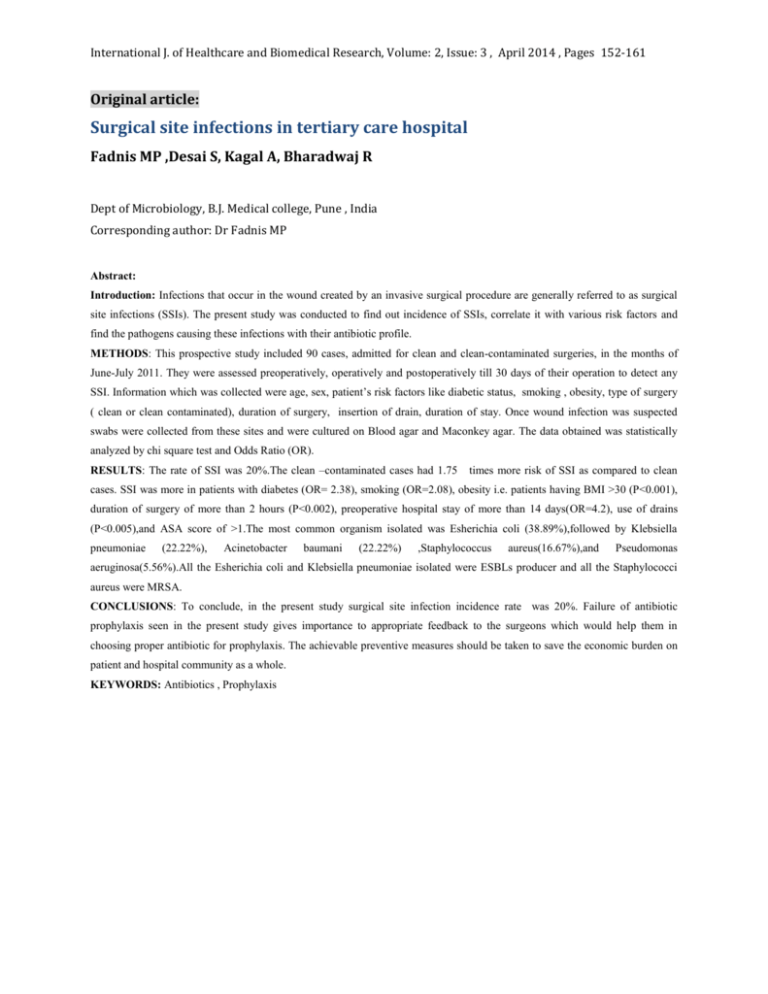
International J. of Healthcare and Biomedical Research, Volume: 2, Issue: 3 , April 2014 , Pages 152-161 Original article: Surgical site infections in tertiary care hospital Fadnis MP ,Desai S, Kagal A, Bharadwaj R Dept of Microbiology, B.J. Medical college, Pune , India Corresponding author: Dr Fadnis MP Abstract: Introduction: Infections that occur in the wound created by an invasive surgical procedure are generally referred to as surgical site infections (SSIs). The present study was conducted to find out incidence of SSIs, correlate it with various risk factors and find the pathogens causing these infections with their antibiotic profile. METHODS: This prospective study included 90 cases, admitted for clean and clean-contaminated surgeries, in the months of June-July 2011. They were assessed preoperatively, operatively and postoperatively till 30 days of their operation to detect any SSI. Information which was collected were age, sex, patient’s risk factors like diabetic status, smoking , obesity, type of surgery ( clean or clean contaminated), duration of surgery, insertion of drain, duration of stay. Once wound infection was suspected swabs were collected from these sites and were cultured on Blood agar and Maconkey agar. The data obtained was statistically analyzed by chi square test and Odds Ratio (OR). RESULTS: The rate of SSI was 20%.The clean –contaminated cases had 1.75 times more risk of SSI as compared to clean cases. SSI was more in patients with diabetes (OR= 2.38), smoking (OR=2.08), obesity i.e. patients having BMI >30 (P<0.001), duration of surgery of more than 2 hours (P<0.002), preoperative hospital stay of more than 14 days(OR=4.2), use of drains (P<0.005),and ASA score of >1.The most common organism isolated was Esherichia coli (38.89%),followed by Klebsiella pneumoniae (22.22%), Acinetobacter baumani (22.22%) ,Staphylococcus aureus(16.67%),and Pseudomonas aeruginosa(5.56%).All the Esherichia coli and Klebsiella pneumoniae isolated were ESBLs producer and all the Staphylococci aureus were MRSA. CONCLUSIONS: To conclude, in the present study surgical site infection incidence rate was 20%. Failure of antibiotic prophylaxis seen in the present study gives importance to appropriate feedback to the surgeons which would help them in choosing proper antibiotic for prophylaxis. The achievable preventive measures should be taken to save the economic burden on patient and hospital community as a whole. KEYWORDS: Antibiotics , Prophylaxis
